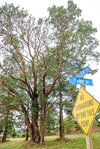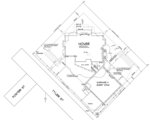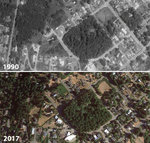A tall, old madrone tree on a private lot near Sather Park is set to come down this winter to make way for a new residence.
People around Port Townsend have been stopping by to look at the tree at …
This item is available in full to subscribers.
We have recently launched a new and improved website. To continue reading, you will need to either log into your subscriber account, or purchase a new subscription.
If you had an active account on our previous website, then you have an account here. Simply reset your password to regain access to your account.
If you did not have an account on our previous website, but are a current print subscriber, click here to set up your website account.
Otherwise, click here to view your options for subscribing.
* Having trouble? Call our circulation department at 360-385-2900, or email our support.
Please log in to continue |
|




A tall, old madrone tree on a private lot near Sather Park is set to come down this winter to make way for a new residence.
People around Port Townsend have been stopping by to look at the tree at 1597 Tyler St., west of Sather Park. One person posted a poem on the tree, hoping the owners of the property would try to save it.
And they did try.
Kenji Glenn of The Green Builder NW was hired to design a home on the property. Glenn said he has been in the process of designing the home and getting all necessary approvals, and that he spent about three weeks trying to come up with a way to build around the tree, to no avail.
“I met with two arborists and the tree’s drip line takes up three-quarters of the property,” Glenn said. “In order to keep that tree there, we would have to not disturb any of the micro root system.”
That means no heavy equipment could be used underneath the tree, and that manual labor would need to replace mechanization, driving project costs up substantially.
Even a “tiny home” would be a tight fit on the lot, he said.
Glenn said he specializes in building sustainable, energy-efficient homes, “and I don’t like taking trees down at all.”
“These clients are really, really nice. They don’t want to create any havoc,” Glenn said, adding that his clients would consider selling the property to anyone who wanted to save the tree, but that the value of the land is approximately $350,000.
Stanley Jonasson and Linda Jangaard, a retired couple from Seattle, purchased the property in March 2017, according to county records.
“They’re just hardworking folks,” Glenn said of his clients.
If the property were to be sold, he and his clients would start the homebuilding process all over again somewhere else, and that would drive him and his crews “nuts,” he said.
“Someone’s going to take that tree down one way or another,” unless they had deep enough pockets to purchase the land and let the tree stay there, Glenn said.
Glenn’s clients plan to build a one-story, approximately 2,000-square-foot home right where the tree is rooted. The home is to have large, south-facing windows for passive solar heating. A detached garage with a 600-square-foot guest room above is also to be built to the north.
Glenn expected that the plans for the home would be approved by the building department in about two weeks, and then the tree would be cut down.
Wood from the tree would be used to make furniture or doors or wood bowls. The home is to have in-floor heating and so the madrone wood wouldn’t be appropriate for use as flooring, Glenn said.
‘I’VE JUST ALWAYS LOVED TREES’
Port Townsend resident and tree lover Marsha Hollingsworth has visited the tree and hopes others would stop by and have a look before it is cut down.
“I’m a tree lover and I’ve always kind of driven around town and looked at the various trees that are around town. And we have some magnificent ones,” Hollingsworth said.
A friend had told her about the madrone and so she took a trip to have a look. It was then that she realized how large the madrone was.
Hollingsworth thinks the tree trunk is more than 5 feet in diameter and that the tree might be well more than 150 years old.
Hollingsworth said she wishes the tree could be saved, but also said she recognizes that property owners have their rights.
“It’s not that I wanted to lead a crusade, I just wanted people to know that we had such a huge tree in town, and a tree that probably predated Victorian Port Townsend,” Hollingsworth said.
“It’s been there for so long. It’s so big and majestic. It’s beautiful, and it hasn’t succumbed to a lot of viruses … madrones really seem to be susceptible to a virus and they can die.”
Hollingsworth said she used to walk in the area of the madrone some 30 years ago. There were fewer houses in the area then.
“There was just a trail along the edge of that property … you could look out at the Olympic Mountains, and it was beautiful.”
“I’m so sad for the tree. We are so crazy about our old Victorian buildings,” and the city’s wonderful trees should also be considered part of the town’s “natural family,” she said.
“I’ve just always loved trees,” Hollingsworth said.
There’s a Monterey cypress in Port Townsend that she admires as well, Hollingsworth said.
“That’s one of the old, wonderful trees we have in town. There’s just a number of them scattered around town,” she said of the Monterey cypress.
Other city trees she likes include a banana tree and a palm tree.
“I think it shivers most of the time,” Hollingsworth said of the banana tree.
She said that another nice madrone tree had been hanging off the side of a bluff near Fort Worden, and was later removed. She noted another large madrone located is in Port Angeles.
USED TO BE MORE TREES
Forest Shomer of Port Townsend said there used to be a stand of middle-aged madrones near that intersection, but said they’ve been thinned out as houses have been constructed there.
“In my opinion, the madrone(s) do add to the character of that neighborhood. I’m guessing that the tree in question is on private property, and I therefore stand back from taking a preservation position on mid-age trees; it’s ultimately the owner’s decision,” Shomer said.
“I personally do love the mature madrones in our community – many of which have been cleared for home building over the past 30 years,” Shomer said.
Healthy specimens more than 80 years old are uncommon, Shomer said.
“They are not a particularly long-lived species, though occasionally enduring for up to 200 years.”
PT has Landmark Tree program, not Heritage Tree program
The City of Seattle has a Heritage Tree program, which is run in conjunction with the group PlantAmnesty to protect trees. However, the program does not extend to Port Townsend, according to Dominic Barrera, executive director of PlantAmnesty. The program works by having the trees deeded to a tree conservation easement, with cooperation from the property owner, Barrera said. The protection could remain in place even if the property is sold.
Steve Gross, city attorney for Port Townsend, said that it’s generally up to property owners to decide what to do with trees on their property. Gross said the city does regulate tree cutting, covered in Port Townsend Municipal Code (PTMC) chapters 12.24 and 19.06.
“The term ‘heritage tree’ is not used in our code. PTMC 12.24 does have a provision for a property owner to have a tree on their property designated a ‘landmark tree.’ If the city agrees that the tree meets the criteria, the property owner can voluntarily enter into a restrictive covenant to maintain the tree. That covenant would prevent the current or future owner from cutting down the tree without the City’s permission. The Public Works Director administers this program,” Gross said.
A representative of the public works department could not be reached for comment on how many landmark trees there are in the city.